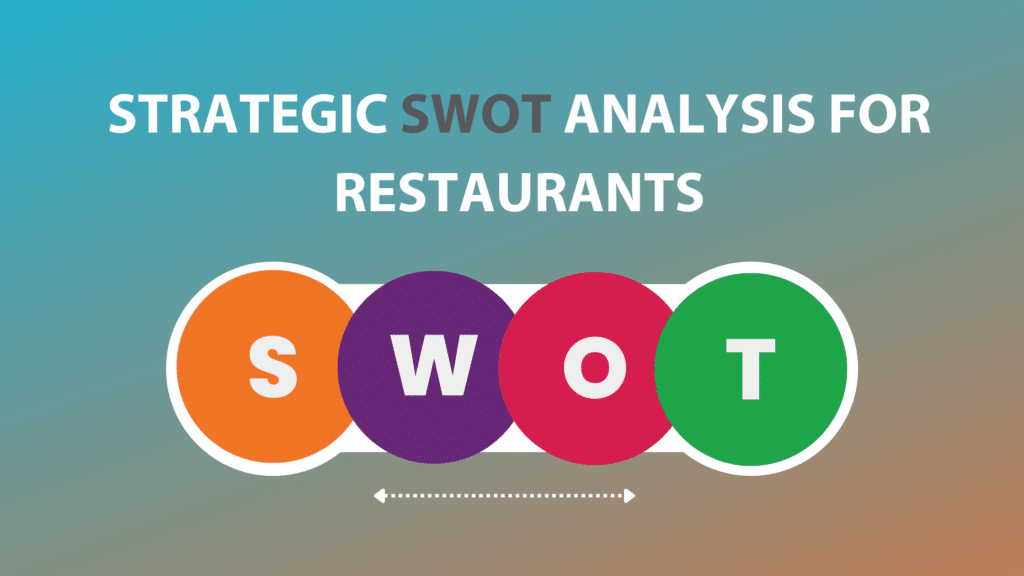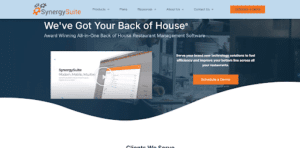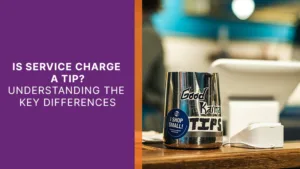Updated on: February 3, 2025
Are you familiar with the parable of the blind men and the elephant? If not, here’s a brief summary.
A group of blind men who don’t know what an elephant is comes across one. Since they are blind, they rely primarily on touch to discern what the nature of the creature is.
One man grasps the hard and rigid tusk. Another man feels the soft, pliable trunk. Another man runs his fingers through the fine hairs on the tail. Still, another wraps his arms around a leg like it’s the trunk of a tree. They’re all touching the same animal but each is having a different tactile experience.
Through that limited experience, each man develops a very different idea of what an elephant is. As a result, they each describe something that is vastly different from what their companions perceive. Further still, their limited perceptions leave them without any idea of what that elephant looks like or actually is.
What does this have to do with the restaurant industry?
Well, restaurant management requires a tremendous amount of work due to many external factors and internal factors, especially if the manager is also the proprietor. As a result of managing this workload amid the potential threats of economic downturns and fluctuating market trends, even the best restaurant manager can have their view of things distorted because they spend most of their time focusing on the day-to-day operations of the restaurant.
By neglecting to consider their establishment’s place in its market, in the industry, and in the wider economy, it can be easy to get distorted and incorrect ideas about the restaurant and its specific growth opportunities. As a result, serious and even financially fatal mistakes can be made, possibly affecting a restaurant’s business plan, which can then threaten its market position and strong brand reputation.
One of the tools that the diligent restaurateur can utilize to prevent this from happening is SWOT analysis for their restaurant. SWOT analyses are useful in every line of business, but restaurant owners can use a SWOT analysis for a food business to navigate the fierce competition of the food industry, low margins, especially of casual dining restaurants, and ever-changing public tastes and demands for more awe-inspiring menu items.
What is a restaurant SWOT analysis?
Make the best strategic decisions for your long-term success by understanding the most valuable insights—and, therefore, the most actionable insights—with SWOT Analysis. SWOT stands for Strengths, Weaknesses, Opportunities, and Threats. SWOT is an analysis tool that can help a business owner develop a holistic picture of their firm’s place in an industry by identifying internal strengths, external threats, restaurant weaknesses you may not even be aware of, and more that can inform business strategy in even the most competitive market. SWOT analysis can help the restaurateur identify problems and correct them with efforts sure to positively impact customer satisfaction, employee turnover rates, labor costs, external opportunities, supply chain disruptions, safety standards, and more. Such goals may seem overwhelming in the competitive food industry, but using these strategic planning tools will offer you a competitive advantage in the crowded market. By breaking down the analysis into four categories, the analysis is easier to organize and visually simplified.
Any firm in any industry can use SWOT analysis to help them plan and strategize. SWOT analysis for restaurants can be especially helpful for management teams as the industry is so highly competitive and margins so low that any insight that can address any weakness or suggest effective strategies can provide an advantage.
Before we move on, a word of caution! SWOT analysis for your restaurant is a serious and highly useful tool. That being said, it is a supplement to, not a replacement for, more in-depth technical analysis of your restaurant’s performance.
You are still going to need a rigorous data capture and analysis regimen.
We have the tools that can help you with every aspect of that in-depth data and we suggest that SWOT analysis for your food business can help you turn that data into winning strategies.
Performing a SWOT analysis: generating data
For the sake of this exercise, let’s learn from some analysis examples. Say that your restaurant is that Tibetan sushi fusion joint that we invented in a previous blog about restaurant ideas.
The restaurant is new. It’s established in a commercial zone in an average North American suburb. You’ve spent a little money on architecture and interior design to give the place the feeling of a dining establishment high in the Himalayas. Your head chef has extensive experience in preparing both traditional sushi and Tibetan cuisine. It’s open for business and you have diners, though you’re still walking on the edge of a knife between profitability and insolvency.
So let’s SWOT this!
It will probably help if you draw a four-square table. Leave some room in the margins to write notes during the analysis step.
Strengths
What is your restaurant good at? What sets it apart from other restaurants? Why would a diner, who has myriad options, come to your restaurant and not others?
For our Tibetan sushi joint, some of our strengths might be its original and unusual menu offerings. There’s probably nothing else like it in the area.
The food is a unique and one-of-kind experience that is prepared by a skilled chef whose cooking is as much an art as it is a technical process.
The ambiance may lend itself to the diner feeling like they’ve been whisked away to a new and interesting place.
For help with this, have a brainstorming session. Review your online presence and gauge consumer preferences. Consult reviews of your restaurant online to find examples of strengths and how you can adjust your marketing strategy to highlight those and communicate changes that will enhance customer satisfaction.
Weaknesses
In what ways is your restaurant lacking? What do you do, but maybe not do so well?
Your Tibetan sushi joint may be a unique thing to your prime location, but its fare may be unfamiliar to a lot of potential diners, making it difficult to meet customer expectations or build a loyal customer base. Even people who like sushi or Tibetan cuisine may or may not see how the connection between the two is palatable.
Maybe your marketing and advertising campaign is lacking. Word of mouth is a fantastic way to get the word out, but it can take time and you need to attract some initial diners to get the process rolling.
Your location in the suburbs may mean that your restaurant is out of the way for many potential diners. Consider establishing a social media presence to build up a strong brand reputation that speaks to your ability to meet and surpass market trends.
Some external factors are difficult to make your way around. Your menu may not have many options for people who don’t like or have allergies to fish. Think out of the box, seriously consider customer feedback, switch up certain offerings with seasonal menus or customizable options, or learn from competitor strategies to improve the customer experience and make waves in your cuisine type.
Opportunities
What steps can you take, both today and along a longer time scale, to improve and grow your restaurant? How can you widen the appeal of your restaurant? How can you ensure that one-time diners become regulars?
Tibetan sushi fusion may be new to your metro area and a lot of people may not be familiar with this unique type of food or your restaurant. How about a social media campaign? It’s comparatively cheap and enables you to connect with your customers and learn consumer behavior.
Are there cultural events in the area where you can advertise or even serve up samples?
Can you tweak the menu to include more options for people who don’t like fish or who have other dietary preferences? These crucial decisions can give you a broader customer base and customer loyalty money can’t buy.
Threats
This may be the scariest part of the SWOT analysis process. Nobody likes thinking about threatening factors, but don’t let fear stop you from taking potential threats seriously and addressing them honestly.
Identifying threats enables you to quantify and qualify them and that enables you to understand them. And when you understand the threats posed? Well, then you manage them, mitigate them, or even eliminate them entirely!
How many competing restaurants are there in your area and in your specific market? How do the food costs and quality of their food and dining experience compare to yours? From where do you source your ingredients and if something happened that constricted or cut off your supply chain, how easily can you pivot to new vendors? What’s the state of the economy as a whole? If a recession hits and business stumbles, do you have the cash reserves to survive for a few months or longer, or will operational costs and market conditions simply take you out of the restaurant industry?
In the case of our Tibetan sushi joint, let’s say that it’s highly successful and an enterprising competitor sets up shop across town. Is the quality of their food and the dining experience comparable to yours and if so, what are they pricing their fare at?
What if your competitor offers services that you don’t like take-out or delivery services?
What if your excellent head chef gets sick for an extended period of time or quits, turning this internal strength and competitive advantage into a common threat? How quickly could you line up a replacement or train your culinary team to manage staff turnover?
Since you make sushi, you have a lot of very perishable and in some cases very expensive ingredients on hand. What will happen to that premium Bluefin tuna you had flown in from Tokyo if you lose power for a few hours? These examples of threats are more common than you want and can affect your ability to set competitive prices or meet food trends.
Performing a SWOT analysis: analysis of the data
Now that you’ve made your lists in the individual SWOT topics, you’re ready to perform the SWOT analysis for your restaurant.
What factors do you have control over? Which ones are beyond your control? For those beyond your control, what things do you have control over that can address them?
How can you make your strengths even stronger and exploit them to the fullest? If diners love the ambiance of your restaurant, what steps can you take to build on that for your target market? More and/or more authentic decoration perhaps? Maybe some music from the region? The smallest details can elevate you from casual dining to a competitive environment with service quality that matches its high-quality food.
What can you do to address your weaknesses? If you’re still new and unknown, how about a social media campaign? They can allow you to directly connect to a sometimes self-defined target demographic. Show potential customers your values by sharing your mission statement online and expressing your appreciation for their patronage, feedback, online interaction, and valuable insights via customer reviews.
Opportunities! What kind of recreational activities, food festivals, and other cultural or community events does your area play host to? Can you either advertise at them or even set up a booth, food truck, or food cart there to not just sell food but generate more knowledge of your food restaurant and exceptional customer service?
Threats. Once you’ve identified potential threats, you can make plans to minimize them—yes, even weighty external factors such as economic downturns or internal factors like broken equipment or unexpected maintenance. Let’s say you have lots of fish sitting in refrigerators. If the power goes out, you can have generators that kick on to keep them running until power is restored.
As you’re brainstorming ideas, take notes on how to foster a competitive environment with your business models, menu offerings, loyalty programs, competitive food prices, exceptional online reviews (and professional responses to negative reviews), adherence to current trends, and service quality. Encourage other people to help you with this process. Your business partner if you have one, your employees and even friends and family may see things that you don’t see, especially internal factors you may overlook.
Final thoughts on SWOT analysis for restaurants
SWOT analysis of your restaurant can be a highly useful and easy-to-use strategic tool to help guide your decision-making and inform the way you plan your business models. When paired with good data capture and analysis software, it can help you set competitive prices and identify other ways to make you intense competition in your market.
Perform a SWOT analysis on a regular basis to stay up to date and you may even consider running them on your competitors so that you can better calibrate your own activities.






